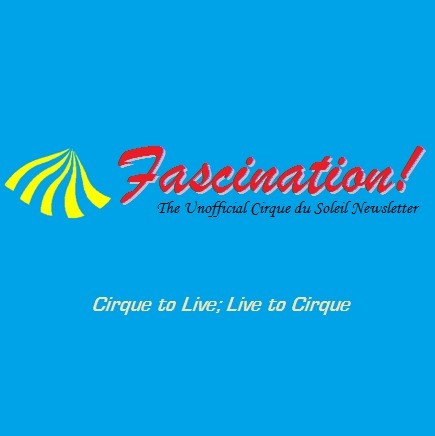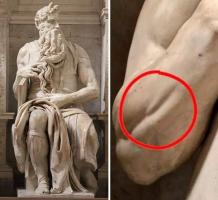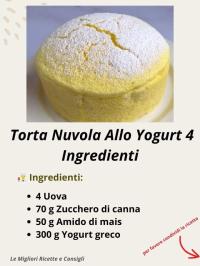Copy Link
Add to Bookmark
Report
AIList Digest Volume 8 Issue 119

AIList Digest Monday, 7 Nov 1988 Volume 8 : Issue 119
Queries:
References On Mass Terms (1 response)
Medical ES
ES in Dermatology
ES Shells for Equipment Diagnosis
Use of alternative metaphors/analogies
Semantic databases, ADA and SETL
Matching of knowledge representation structures
How to fit ATMS into Frames
Tomita's algorithm
Method of Lauritzen and Spiegelhalter
Valiant's Learning Model
----------------------------------------------------------------------
Date: 31 Oct 88 14:41:46 GMT
From: bpa!temvax!pacsbb!rkaplan@rutgers.edu (Randy Kaplan)
Subject: References On Mass Terms
I am doing research on knowledge acquisition from NL text. I am in
need of references on MASS TERMS. If anyone has any references they
would be most helpful.
Randy Kaplan
kaplan@vuvaxcom.bitnet
------------------------------
Date: 3 Nov 88 17:56:49 GMT
From: attcan!utgpu!jarvis.csri.toronto.edu!neat.ai.toronto.edu!gh@uune
t.uu.net (Graeme Hirst)
Subject: Re: References On Mass Terms
>I am doing research on knowledge acquisition from NL text. I am in
>need of references on MASS TERMS. If anyone has any references they
>would be most helpful.
The work of Harry Bunt, published in his book "Mass terms and
model-theoretic semantics (Cambridge UP), would be a start. There is
also work by Francis Jeffry Pelletier, University of Alberta. He is a
philosopher interested in NL issues; try looking him up in the
appropriate indexes.
\\\\ Graeme Hirst University of Toronto Computer Science Department
//// uunet!utai!gh / gh@ai.toronto.edu / 416-978-8747
------------------------------
Date: Mon, 31 Oct 88 23:20:29 PST
From: Ed Ipser <ipser@vaxa.isi.edu>
Subject: Medical ES
I am interested in knowing what is the state of the science
in medical expert systems. Specifically, i would like
some pointers to:
- medical expert systems which are actually in use;
- medical expert system shells which are available
- commercial products
- university prototypes
- expert system shells which are available;
e.g. KEE
I am more interested in working products or prototypes
than in current research in the field (which abounds
in the literature).
thanks,
ed ipser.
------------------------------
Date: 2 November 1988, 17:31:51
From: M. De Bernardinis +39 0521-991261 CHIRUR2 at
IPRUNIV
Subject: ES in Dermatology
A professor here is interested in Expert Systems in Dermatology.
Any help locating references, products or researchers on this topic
would be appreciated.
Thanks
M. De Beranrdinis
University of Parma
CHIRUR2 AT IPRUNIV.EARN
------------------------------
Date: Tue, 1 Nov 88 12:54 CST
From: <A0J5791%TAMSTAR.BITNET@MITVMA.MIT.EDU>
Subject: ES Shells for Equipment Diagnosis
Has anyone used EXSYS or PERSONAL CONSULTANT (TI) shells for rule-based
ES for the diagnosis of industrial equipment production defects/failures?
I am trying to develop such a system for a Wave Soldering process for PWB
manufacture. I am interested in learning about other persons experience
in using the above mentioned shells (or any other ones), and the suitability
of these shells for process trouble-shooting and diagnosis.
I convey my appreciation in advance for any comments or help provided.
Arshad Jamil
Dept. of Industrial Engineering
Texas A&M University, C.S., Texas
------------------------------
Date: 1 Nov 88 11:56:07 GMT
From: mcvax!ukc!eagle.ukc.ac.uk!icdoc!ivax!sme@uunet.uu.net (Steve M
Easterbrook)
Subject: Use of alternative metaphors/analogies
Hi. I am trying to recall the reference to a paper I read a while ago
which discussed the use of analogies in learning. In particular this
paper showed how different metaphors can be used to illustrate different
features of the same concept. I think the example used was that of the
behaviour of gas molecules, using such metaphors as crowded rooms, etc
to help understand such concepts as pressure. Or it might have been the
one which used an example of explaining how a variable works by
comparing it to a box, amongst other things. However, I may be mixing
these examples up with other papers on analogy.
The reason I am trying to recall this paper is because I am studying
how experts might use different abstractions of a concept when
explaining it to a knowledge engineer, where the explanations at
first appear to be in conflict, but the experts really agree with
each other at a deep level.
Any related references anyone can point me towards would be most
useful. Ta.
Steve
------------------------------
Date: 3 Nov 88 11:32:04 GMT
From: mcvax!unido!infhil!schunk@uunet.uu.net (Michael Schunk)
Subject: Semantic databases, ADA and SETL
I have the task to make arbitrary data objects of the two
languages Ada and Setl ( as the name implies a set oriented
language, that uses sets, tuples and maps as type constructors )
persistent.
Programs in one of the languages should be able to access
persistent objects created from a program in the other language.
My idea was to use a semantic/obj. oriented database and
to create interfaces for each of the languages:
persistent objects are stored in the database and can
be accessed with the interface.
My problem is to get a semantic database. We only have
a normal relational database and it seems to be a lot
of work to store arbitrary objects with it.
Does anybody know from where to get a prototype of a
semantic or object oriented database system?
Advanced properties such as inheritance, generalization etc
are nice but not necessary, because we do not plan to
make an object oriented language persistent at the moment.
Thanks in advance,
Michael Schunk
------------------------------
Date: Thu, 3 Nov 88 16:48 EDT
From: LEWIS@cs.umass.EDU
Subject: Matching of knowledge representation structures
Can anyone point me to some references on matching of subparts of
frame-based knowledge representation structures? Essentially what I'm
interested in is equivalent to finding some/all/the biggest of the
isomorphic subgraphs of two directed graphs, except that edges and vertices
are labeled, and there are restrictions on what labels are allowed to match.
For additional fun, there might be weights on the edges and vertices as
well, and you might not just be interested in large-sized isomorphic
subgraphs, but in maximal scoring ones.
Still more interesting would be if anything has been done on the case where
you can inferences to the structures before matching, so that you actually
have to search a space of alternative representations, as well as comparing
them.
Suggestions? If text content matching had been a bigger application of NLP
in the past, there'd be a bunch of stuff on this, but as it is, I suspect that
vision or case based reasoning people may have done more on this.
Best,
David D. Lewis ph. 413-545-0728
Computer and Information Science (COINS) Dept. BITNET: lewis@umass
University of Massachusetts, Amherst ARPA/MIL/CS/INTERnet:
Amherst, MA 01003 lewis@cs.umass.edu
USA
UUCP: ...!uunet!cs.umass.edu!lewis@uunet.uu.net
------------------------------
Date: 3 Nov 88 16:27:53 GMT
From: haven!h.cs.wvu.wvnet.edu!b.cs.wvu.wvnet.edu!siping@purdue.edu
(Siping Liu)
Subject: How to fit ATMS into Frames
In frame knowledge representation systems, knowledge
can be inherited through the tree-style world hierarchies.
i.e., each world has only one parent world.
The question is: if the intersection of the confined problem
spaces for two (or more) brother worlds is not empty, why can not
they have a common child world with the intersection as its
problem space ?
BTW, the question is raised when I am thinking how to fit ATMS
(Assumption-based Truth Maintenance System) into a frame system.
------------------------------
Date: Tue, 01 Nov 88 21:33:57 EST
From: "James H. Coombs" <JAZBO%BROWNVM.BITNET@MITVMA.MIT.EDU>
Subject: Tomita's algorithm
Has anyone worked on this algorithm or published about it since IJCAI 85?
Also, just out of curiosity, does Tomita use an SLR(1), LR(1), or LALR(1)?
--Jim
Dr. James H. Coombs
Software Engineer, Research
Institute for Research in Information and Scholarship (IRIS)
Brown University
jazbo@brownvm.bitnet
Acknowledge-To: <JAZBO@BROWNVM>
------------------------------
Date: Wed, 2 Nov 88 16:24:57 EST
From: rpg@CS.BROWN.EDU
Subject: Method of Lauritzen and Spiegelhalter
In this year's JRSS, Lauritzen and Spiegelhalter give an algorithm for
computing probability distributions over bayes/causal/belief networks.
I'd very much like to experiment with this technique, but dread the
thought of implementing it. ESPECIALLY if someone else has already
done it better. Do any of you out there have code for this algorithm
that you wouldn't mind sharing? It would be strictly for academic
research, of course, and I'd be willing to undertake any sensible
agreement to protect your ownership of the code.
Thanks,
Robert Goldman
BITNET rpg@BROWNCS.BITNET
INTERNET rpg@cs.brown.edu
UUCP {decvax,allegra}!brunix!rpg
U.S. Mail: Brown C.S. Dept.,
Box 1910, Providence, RI 02912
(401) 863-7669
------------------------------
Date: 6 Nov 88 06:55:45 GMT
From: techunix.BITNET!dario@ucbvax.berkeley.edu (Dario Ringach)
Subject: Valiant's Learning Model
Is it fair to assume a constant probabilistic distribution Px on space
X during the learning process? I mean a *good* teacher would draw
points of X so as to minimize the error between the current hypothesis
and the concept to be learnt , so that the distribution Px could
change after presenting each sample (i.e. Px(n) is now a stochastic
process). Are these two models equivalent in the sense that they can
learn the same classes of concepts?
Has anyone attempted to approach learning as a discrete time Markov
process on the hypothesis space H? For instance at any time k let
h1=h(k) be the current hypothesis obviously there is defined for any
h2 in H a transition probability P(h(h+1)=h2|h(k)=h1) that depends
on the probability distribution Px and the learning algorithm A.
------------------------------
End of AIList Digest
********************



















